Carbon Nanodots Embedded on a Polyethersulfone Membrane for Cadmium(II) Removal from Water
Abstract
:1. Introduction
2. Materials and Methods
2.1. Synthesis of Carbon Nanodots and Membrane
2.2. Characterisation of Membrane Embedded with Carbon Nanodots
2.3. Evaluation of the Membrane Performance
2.4. Adsorption of Cadmium(II) from Water Using PES Membrane Coated with Carbon Nanodots
2.5. Electrochemical Detection of the Cadmium(II) Removed from Water
3. Results
3.1. Characterisation of the Membrane
3.2. Membrane Performance
3.3. Characterization of Glassy Carbon Electrode (GCE) for Cadmium(II) Determination
3.4. Electrochemical Detection of Cd(II) Using GCE
3.5. Interference Studies
3.6. Reusability of 0.5% CNDs/PES for Cd(II) Removal
3.7. The Removal of Cadmium(II) in Spiked Water Sample Using 0.5% CNDs/PES
4. Conclusions
Author Contributions
Funding
Institutional Review Board Statement
Informed Consent Statement
Data Availability Statement
Acknowledgments
Conflicts of Interest
References
- Kang, A.J.; Baghdadi, M.; Pardakhti, A. Removal of cadmium and lead from aqueous solutions by magnetic acid-treated activated carbon nanocomposite. Desalination Water Treat. 2016, 57, 18782–18798. [Google Scholar] [CrossRef]
- Bhuyan, M.S.; Bakar, M.A.; Akhtar, A.; Hossain, M.B. Heavy Metal Contamination in Surface Water and Sediment of the Meghna River, Bangladesh; Elsevier: Amsterdam, The Netherlands, 2017; pp. 273–279. [Google Scholar]
- Olivera, S.; Chaitra, K.; Venkatesh, K.; Muralidhara, H.; Asiri, A.M.; Ahamed, M.I. Cerium dioxide and composites for the removal of toxic metal ions. Environ. Chem. Lett. 2018, 16, 1233–1246. [Google Scholar] [CrossRef]
- Sharma, G.; Naushad, M. Adsorptive removal of noxious cadmium ions from aqueous medium using activated carbon/zirconium oxide composite: Isotherm and kinetic modelling. J. Mol. Liq. 2020, 310, 113025. [Google Scholar] [CrossRef]
- Sivarajasekar, S.M.N.; Paramasivan, J.S.V.T.; Naushad, M. Phytoremediation of heavy metals: Mechanisms, methods and enhancements. Environ. Chem. Lett. 2018, 16, 1339–1359. [Google Scholar]
- Sivarajasekar, N. Hevea brasiliensis—A Biosorbent for the Adsorption of Cu(II) from Aqueous Solutions. Carbon Lett. 2007, 8, 199–206. [Google Scholar] [CrossRef]
- Faisal, A.A.H.; Al-wakel, S.F.A.; Assi, H.A.; Naji, L.A.; Naushad, M.J. Waterworks sludge-filter sand permeable reactive barrier for removal of toxic lead ions from contaminated groundwater. J. Water Process Eng. 2020, 33, 101112. [Google Scholar] [CrossRef]
- Ravindranath, N.A.; Jayaraman, V.; Gnanasekaran, T. Evaluation of cadmium concentration in vapour phase by a novel approach. Sens. Actuators B Chem. 2018, 254, 59–63. [Google Scholar] [CrossRef]
- Małecki, J.; Maroń, A.M. Luminescence properties of copper(I), zinc(II) and cadmium(II) coordination compounds with picoline ligands. J. Lumin. 2017, 186, 127–134. [Google Scholar] [CrossRef]
- Fatoki, O.S.; Awofolu, O.R. Levels of Cd, Hg and Zn in some Surface Waters from the Eastern Cape Province, South Africa. Water SA 2004, 29, 375–380. [Google Scholar] [CrossRef] [Green Version]
- Street, R.A.; Kulkarni, M.G.; Stirk, W.A.; Southway, C.; Abdillahi, H.S.; Chinsamy, M.; Van Staden, J. Effect of cadmium uptake and accumulation on growth and antibacterial activity of Merwilla plumbea—An extensively used medicinal plant in South Africa. S. Afr. J. Bot. 2009, 75, 611–616. [Google Scholar] [CrossRef] [Green Version]
- Maleki, A.; Mahvi, A.H.; Zazouli, M.A.; Izanloo, H.; Barati, A.H. Aqueous cadmium removal by adsorption on barley hull and barley hull ash. Asian J. Chem. 2011, 23, 1373–1376. [Google Scholar]
- Shi, L.; Li, X.; Li, Y.; Wen, X.; Li, J.; Choi, M.M.F.; Dong, C.; Shuang, S. Naked oats-derived dual-emission carbon nanodots for ratiometric sensing and cellular imaging. Sens. Actuators B Chem. 2015, 210, 533–541. [Google Scholar] [CrossRef]
- Mathumba, P.; Kuvarega, A.T.; Dlamini, L.N.; Malinga, S.P. Synthesis and characterisation of titanium dioxide nanoparicles prepared within hyperbranched polyethylenimine polymer template using a modified sol–gel method. Mater. Lett. 2017, 195, 172–177. [Google Scholar] [CrossRef]
- Cieśliński, J.T.; Krygier, K.A. Sessile droplet contact angle of water—Al2O3, water—TiO2 and water—Cu nanofluids. Exp. Therm. Fluid Sci. 2014, 59, 258–263. [Google Scholar] [CrossRef]
- Kurniawan, T.A.; Chan, G.Y.; Lo, W.-H.; Babel, S. Physico–chemical treatment techniques for wastewater laden with heavy metals. Chem. Eng. J. 2006, 118, 83–98. [Google Scholar] [CrossRef]
- Elektorowicz, M.; Muslat, Z. Removal of Heavy Metals from Oil Sludge Using Ion Exchange Textiles. Environ. Technol. 2008, 29, 393–399. [Google Scholar] [CrossRef]
- Kasim, N.; Mohammad, A.W.; Abdullah, S.R.S. Performance of membrane filtration in the removal of iron and manganese from Malaysia’s groundwater. Membr. Water Treat. 2016, 7, 277–296. [Google Scholar] [CrossRef]
- Haan, T.Y.; Shah, M.; Chun, H.K.; Mohammad, A.W. A study on membrane technology for surface water treatment: Synthesis, characterization and performance test. Membr. Water Treat. 2018, 9, 69–77. [Google Scholar]
- Zinadini, S. Preparation and characterization of high flux PES nanofiltration membrane using hydrophilic nanoparticles by phase inversion method for application in advanced wastewater treatment. JARWW 2016, 5, 232–235. [Google Scholar]
- Ding, K.; Wang, P.; Zhao, J.; Li, Y.; Chen, Y.; Zhang, Y.; Wei, B.; Sun, Y. Carbon Nanodots Prepared from NaOH Boiled Graphene and Its Usage as a Support of PdO for Ethanol Oxidation Reaction; Elsevier: Amsterdam, The Netherlands, 2017; pp. 9766–9774. [Google Scholar]
- Afkhami, A.; Saber-Tehrani, M.; Bagheri, H. Simultaneous removal of heavy-metal ions in wastewater samples using nano-alumina modified with 2,4-dinitrophenylhydrazine. J. Hazard. Mater. 2010, 181, 836–844. [Google Scholar] [CrossRef]
- Zhu, W.; Gao, J.; Sun, S.; Zhang, S.; Chung, T.S. Poly (amidoamine) dendrimer (PAMAM) grafted on thin fi lm composite (TFC) nano fi ltration (NF) hollow fi ber membranes for heavy metal removal. J. Membr. Sci. 2015, 487, 117–126. [Google Scholar] [CrossRef]
- Qu, P.; Tang, H.; Gao, Y.; Zhang, L.; Wang, S. Polyethersulfone Composite Membrane Blended. BioResources 2010, 5, 2323–2336. [Google Scholar]
- Cheng, Y.; Xu, C.; Kang, P.; Ping, S. Environmental effect of nitrogen-containing functionalization on the electrocatalytic activity of PtRu nanoparticles supported on carbon nanotubes for direct methanol fuel cells. Appl. Catal. B 2014, 158–159, 140–149. [Google Scholar] [CrossRef]
- Sambaza, S.S.; Mhlanga, S.D.; Malinga, S.P.; Nxumalo, E.N. Fabrication of Novel PEI-Based Antimicrobial Metal-Organic Nanocomposites for the Treatment of Wastewater. Master’s Thesis, University of Johannesburg, Johannesburg, South Africa, 2016. [Google Scholar]
- Fahmi, M.Z.; Wathoniyyah, M.; Khasanah, M.; Rahardjo, Y.; Wafiroh, S.; Abdulloh, A. Incorporation of graphene oxide in polyethersulfone mixed matrix membranes to enhance hemodialysis membrane performance. RSC Adv. 2018, 8, 931–937. [Google Scholar] [CrossRef] [Green Version]
- Orooji, Y.; Faghih, M.; Razmjou, A.; Hou, J.; Moazzam, P. Nanostructured mesoporous carbon polyethersulfone composite ultra fi ltration membrane with signi fi cantly low protein adsorption and bacterial adhesion. Carbon 2017, 111, 689–704. [Google Scholar] [CrossRef]
- Yuan, Z.; Wu, X.; Jiang, X.Y.; Li, Y.; Huang, J.; Hao, L.; Zhang, J.; Wang, J. Carbon dots-incorporated composite membrane towards enhanced organic solvent nano filtration performance. J. Membr. Sci. 2018, 549, 1–11. [Google Scholar] [CrossRef]
- Ahmad, A.; Abdulkarim, A.; Ooi, B.; Ismail, S. Recent development in additives modifications of polyethersulfone membrane for flux enhancement. Chem. Eng. J. 2013, 223, 246–267. [Google Scholar] [CrossRef]
- Vatanpour, V.; Siavash, S.; Moradian, R.; Zinadini, S.; Astinchap, B. Fabrication and characterization of novel antifouling nanofiltration membrane prepared from oxidized multiwalled carbon nanotube/polyethersulfone nanocomposite. J. Membr. Sci. 2011, 375, 284–294. [Google Scholar] [CrossRef]
- Koulivand, H.; Shahbazi, A.; Vatanpour, V.; Rahmandoust, M. Development of carbon dot-modified polyethersulfone membranes for enhancement of nanofiltration, permeation and antifouling performance. Sep. Purif. Technol. 2020, 230, 115895. [Google Scholar] [CrossRef]
- Chen, K.J.; He, Y.; Li, X.; Cai, K.; Zhang, T.; Liu, Y.; Hu, D.; Lin, L.; Kong, J.; Liu, K.; et al. Removal of cadmium and lead ions from water by sulfonated magnetic nano-particle adsorbents. J. Colloid Interface Sci. 2017, 494, 307–316. [Google Scholar] [CrossRef] [PubMed]
- Tshwenya, L.; Omotayo, A.A. Ethylenediamine functionilized carbon nanoparticles: Synthesis, characterization, and evaluation for cadmium removal in water. RCS 2017, 7, 34226–34235. [Google Scholar]
- Mortaheb, H.; Kosuge, H.; Mokhtarani, B.; Amini, M.H.; Banihashemi, H.R. Study on removal of cadmium from wastewater by emulsion liquid membrane. J. Hazard. Mater. 2009, 165, 630–636. [Google Scholar] [CrossRef] [PubMed]
- Hota, G.; Kumar, B.R.; Ng, W.J.; Ramakrishna, S. Fabrication and characterization of a boehmite nanoparticle impregnated electrospun fiber membrane for removal of metal ions. J. Mater. Sci. 2007, 43, 212–217. [Google Scholar] [CrossRef]
- Adapa, S.; Malani, A. Role of hydration energy and co-ions association on monovalent and divalent cations adsorption at mica-aqueous interface. Sci. Rep. 2018, 8, 1–12. [Google Scholar] [CrossRef] [PubMed]
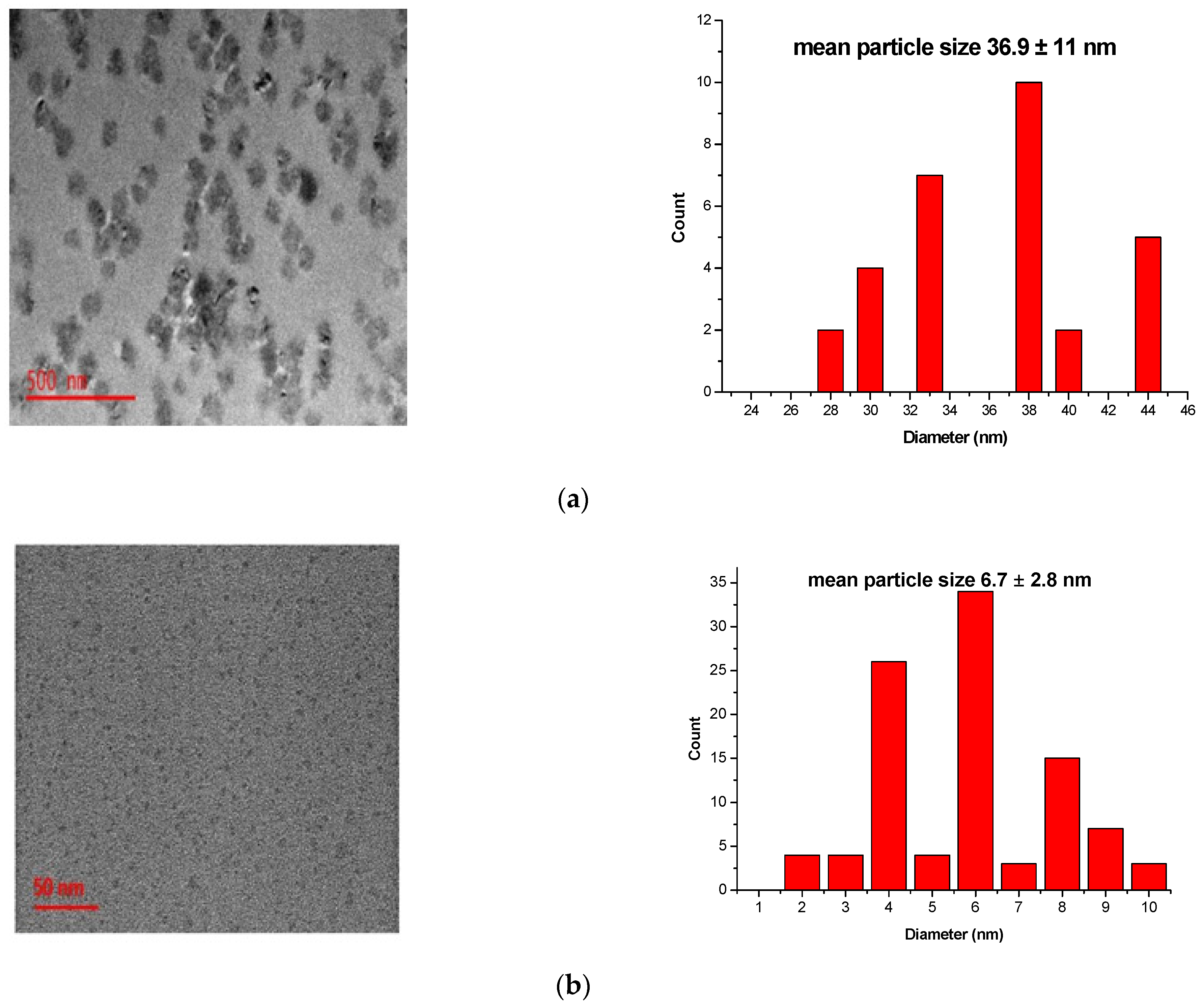
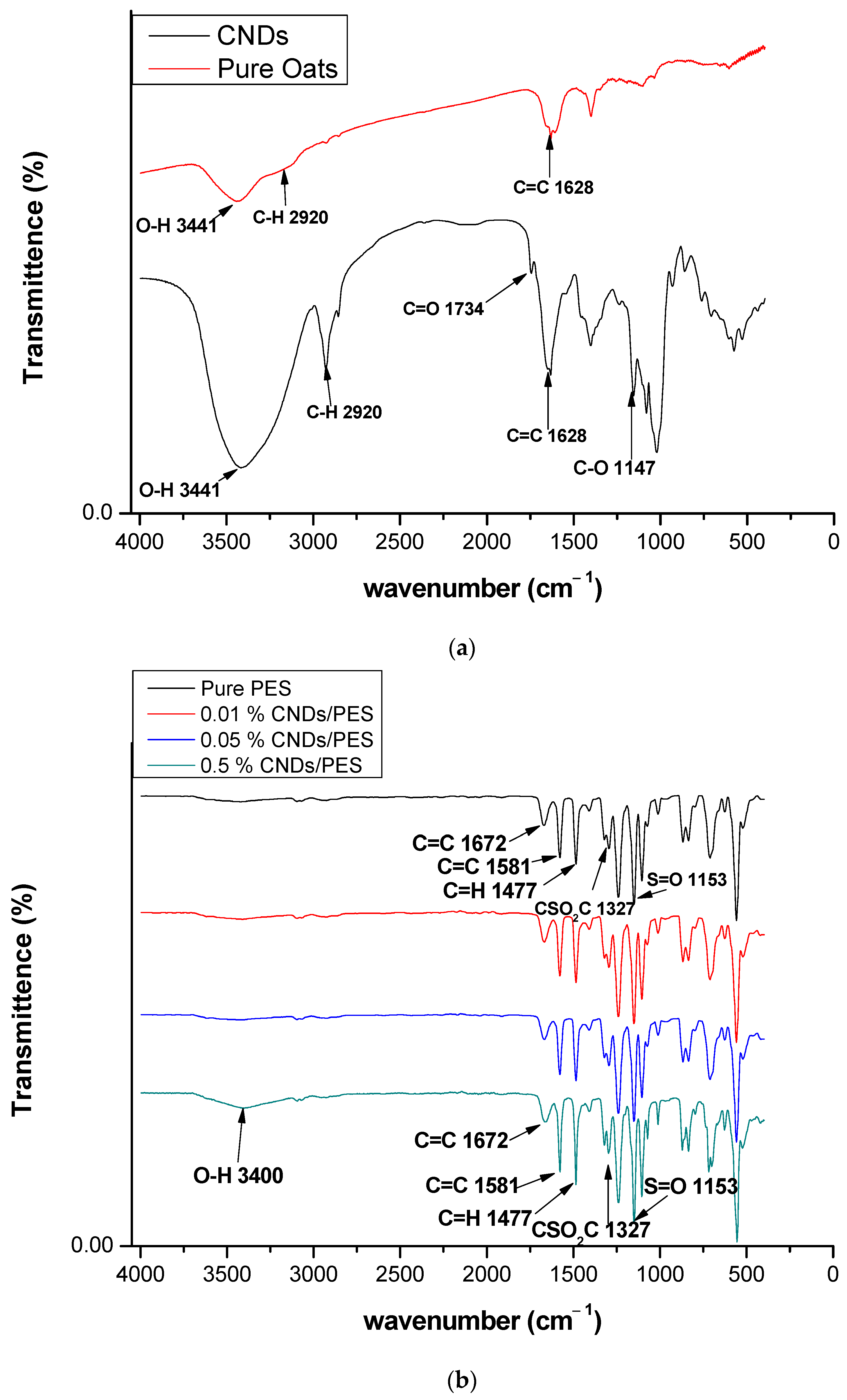
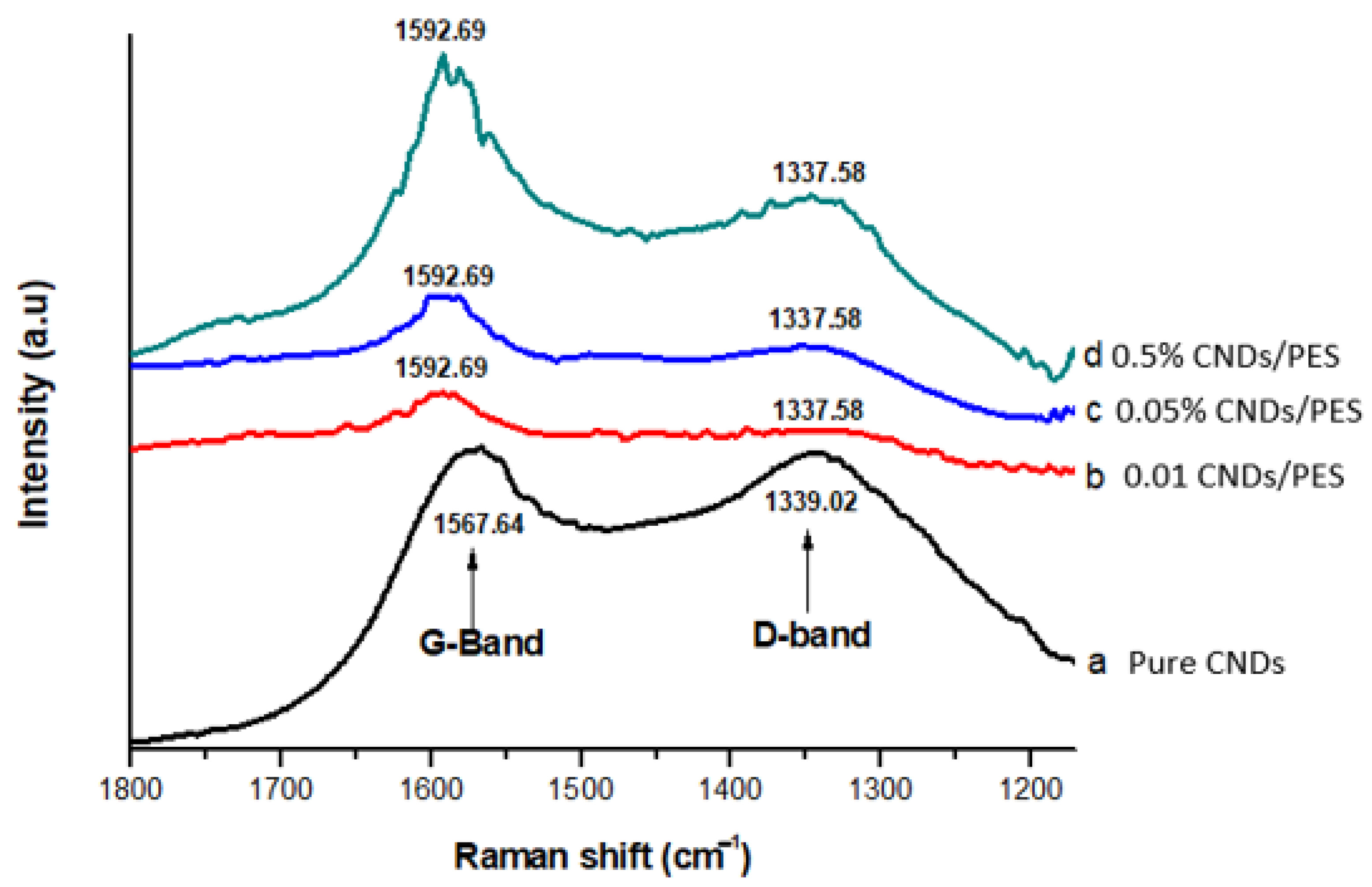
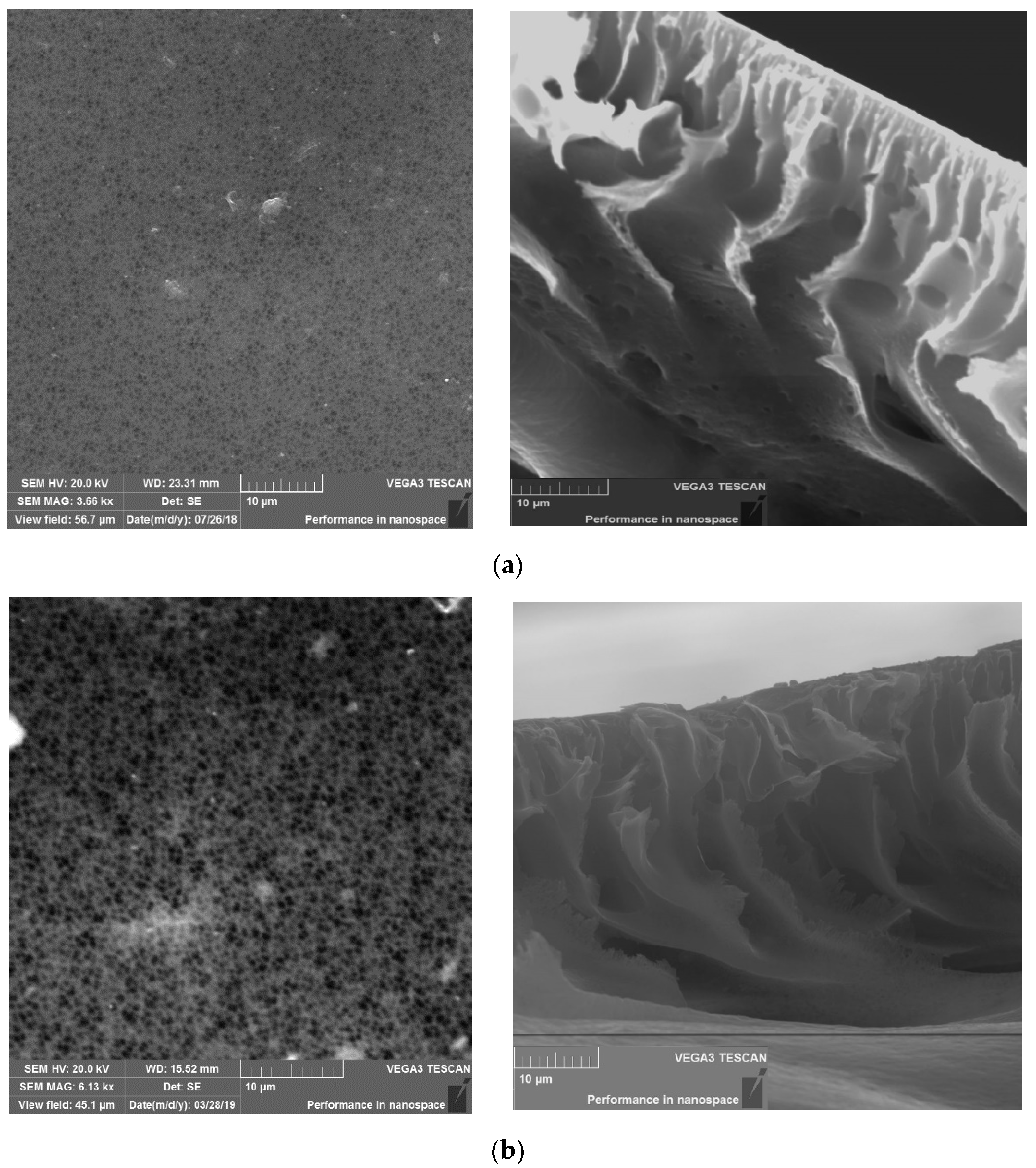
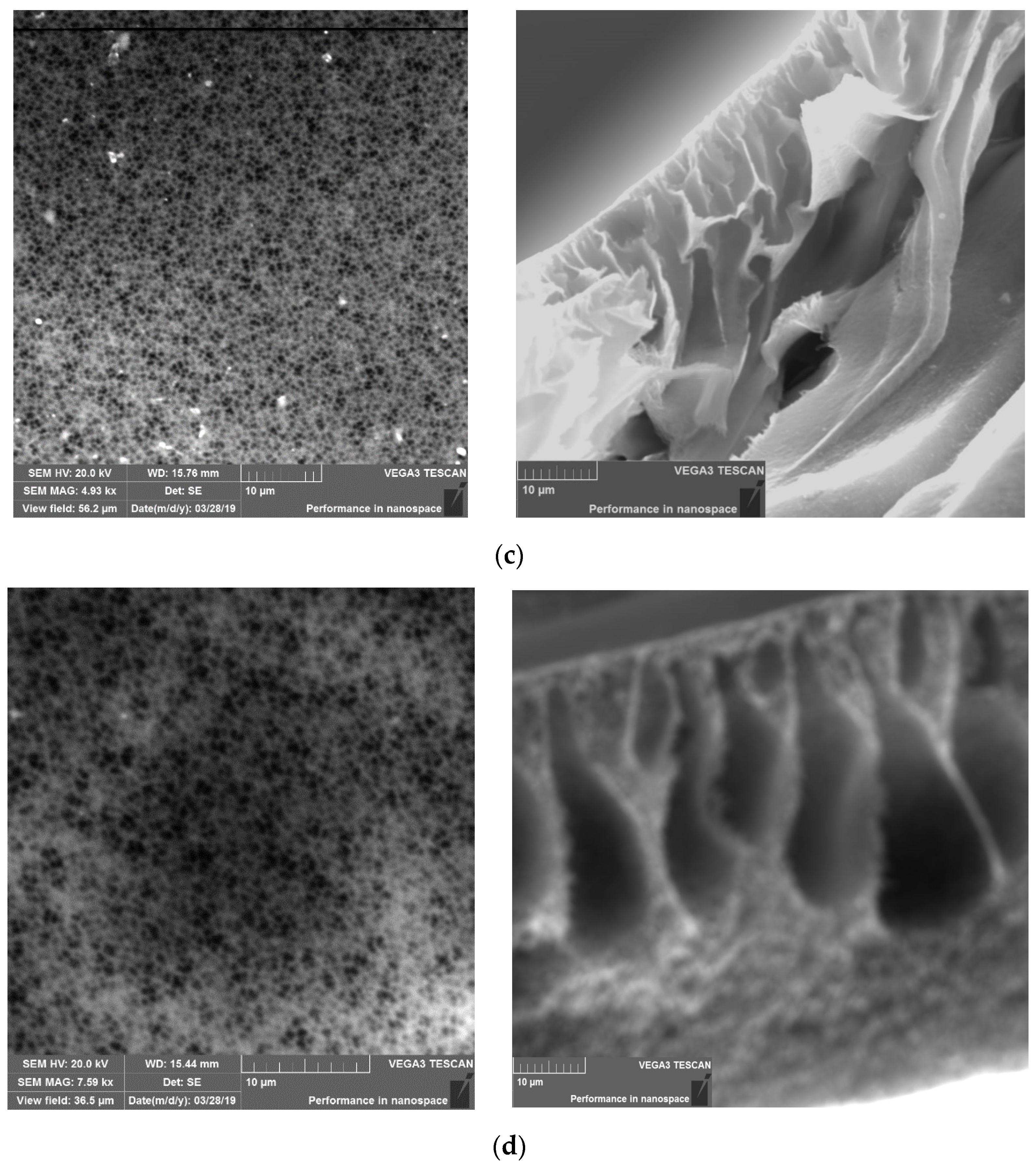
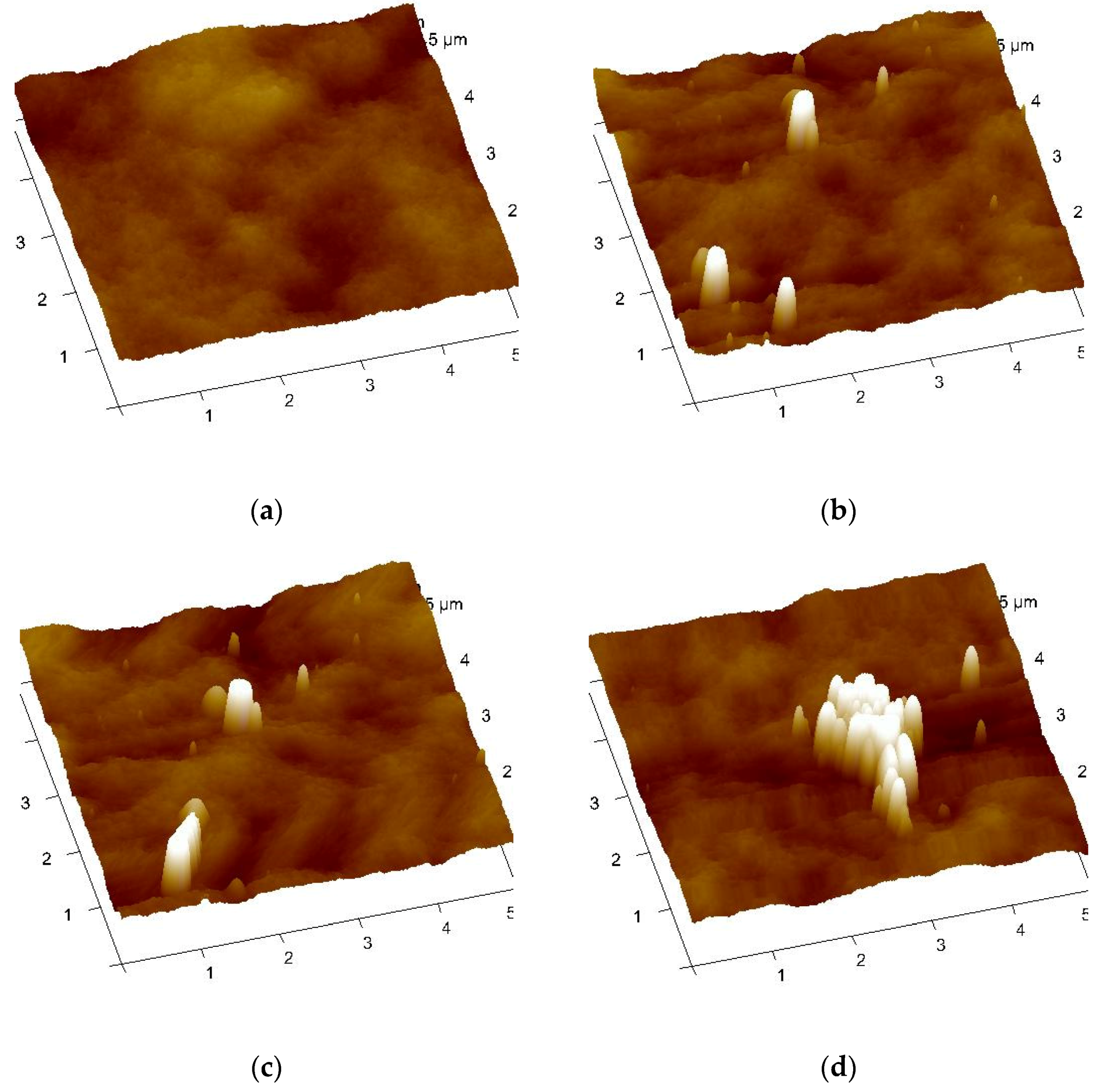

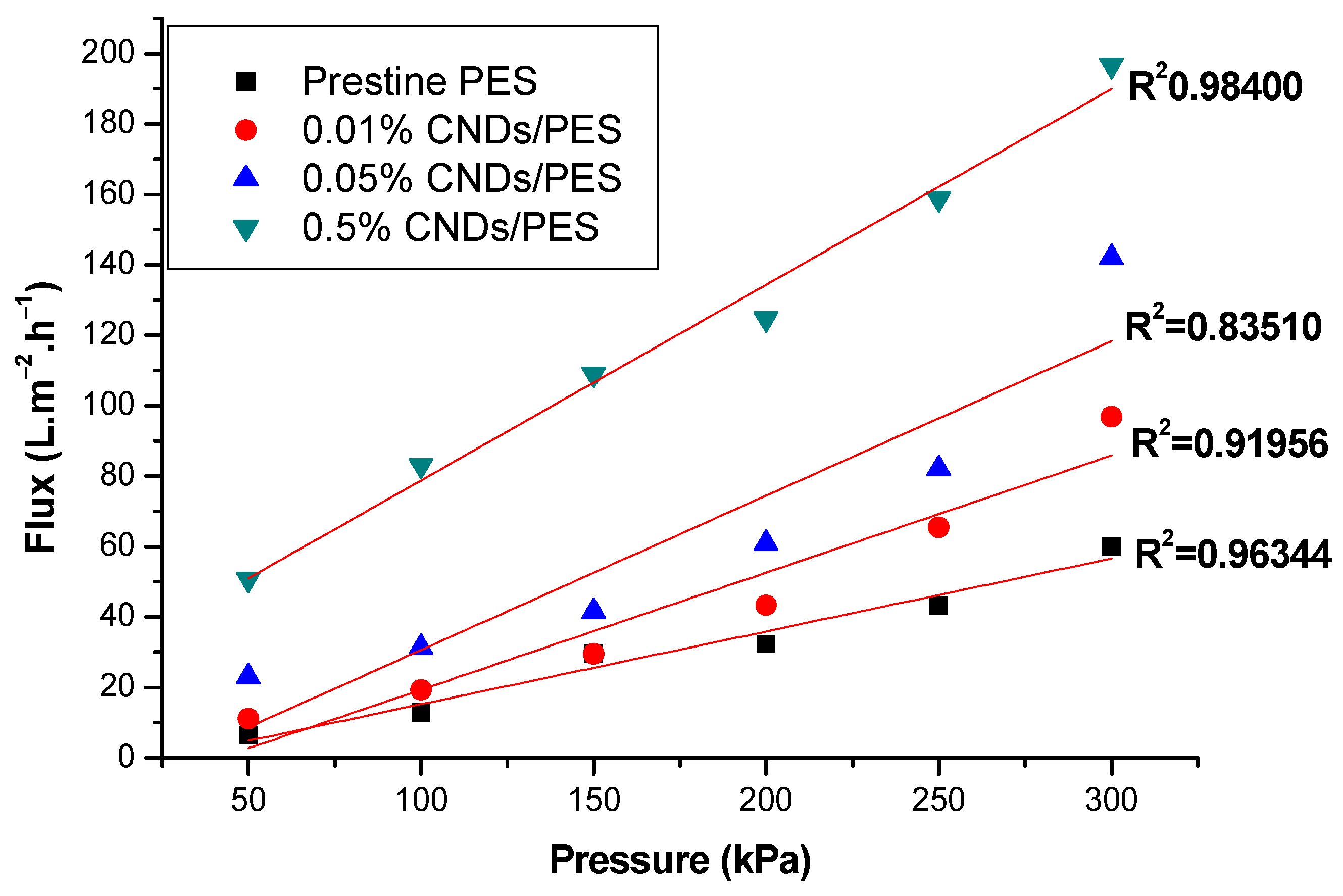

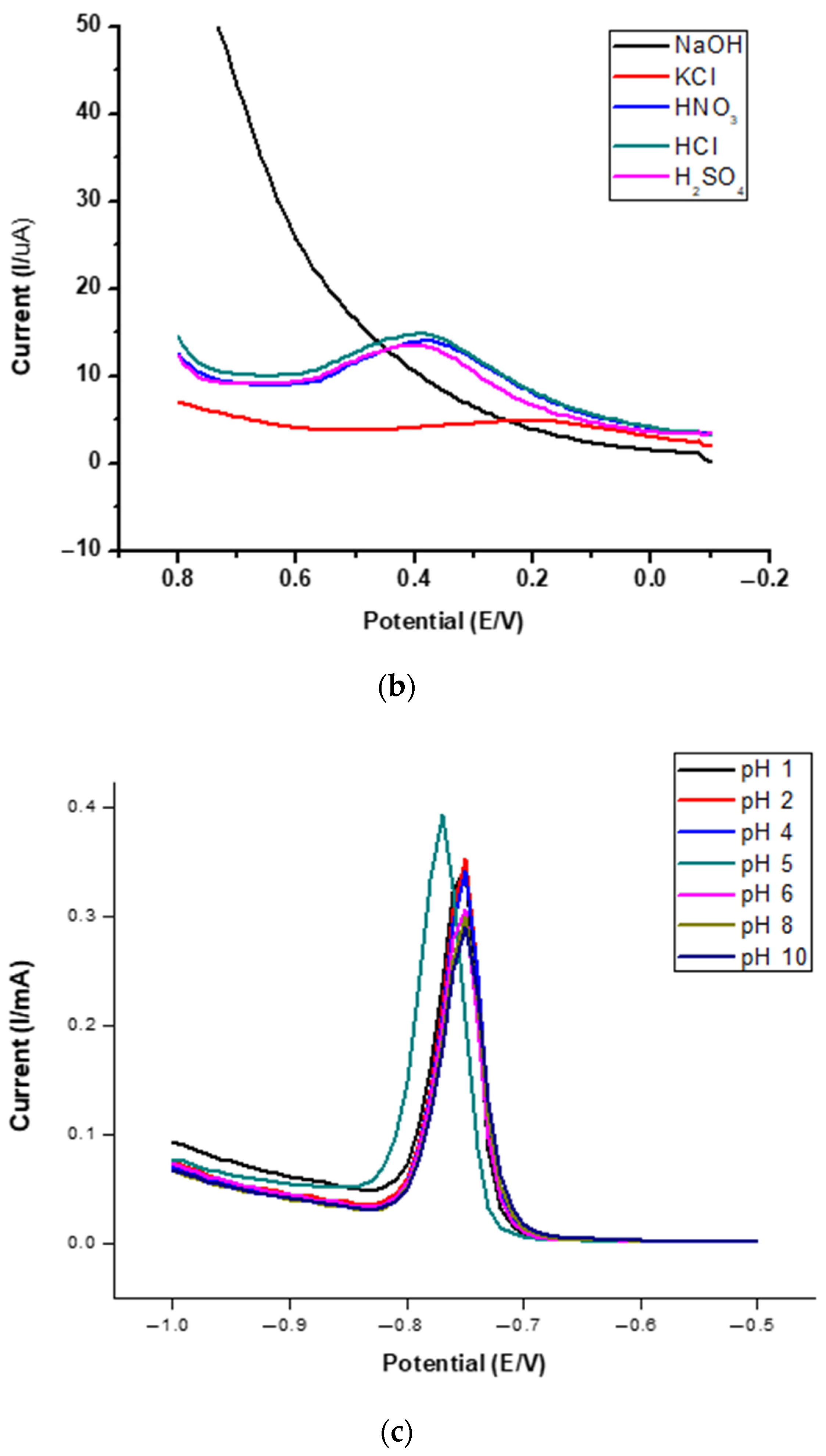
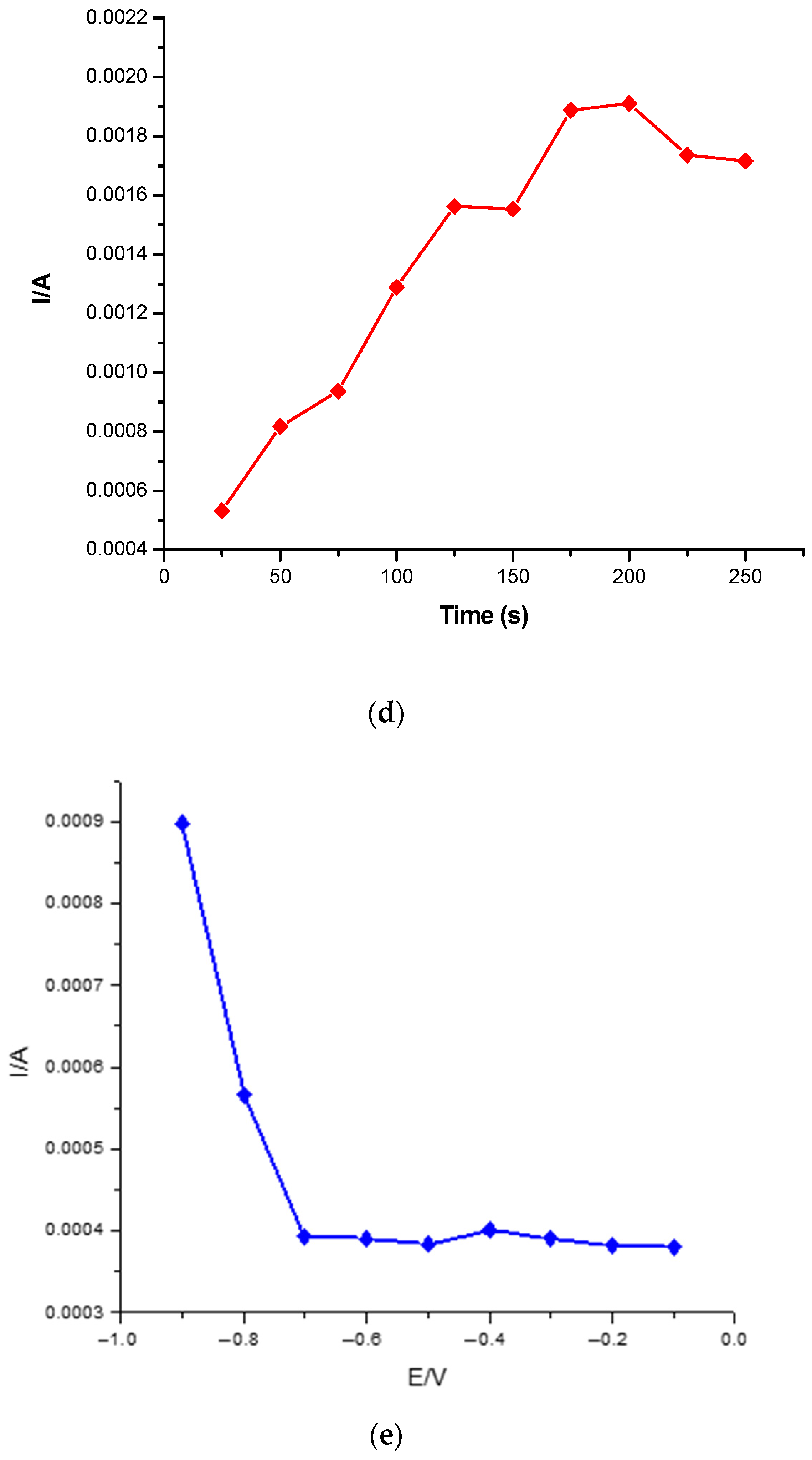

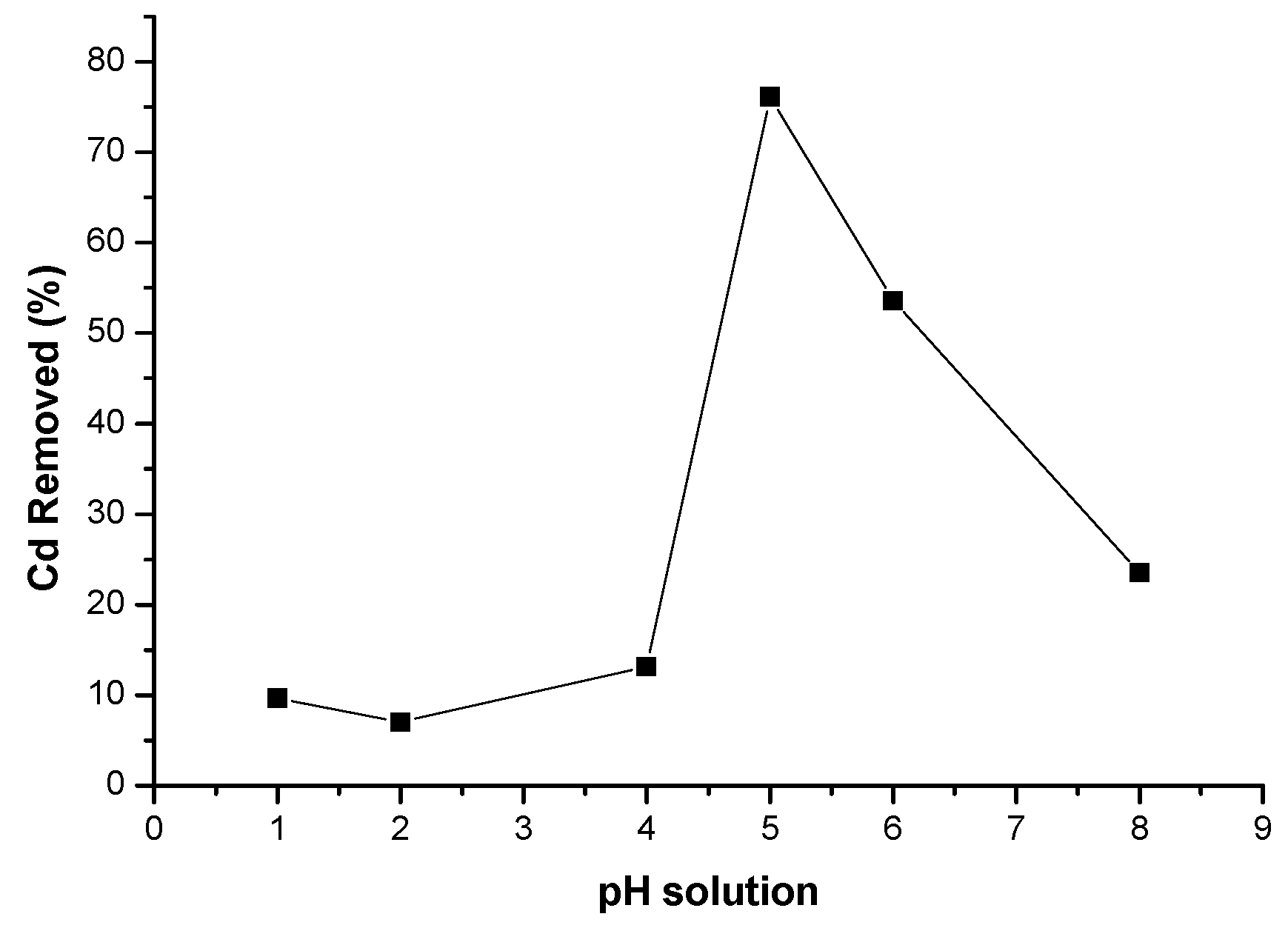

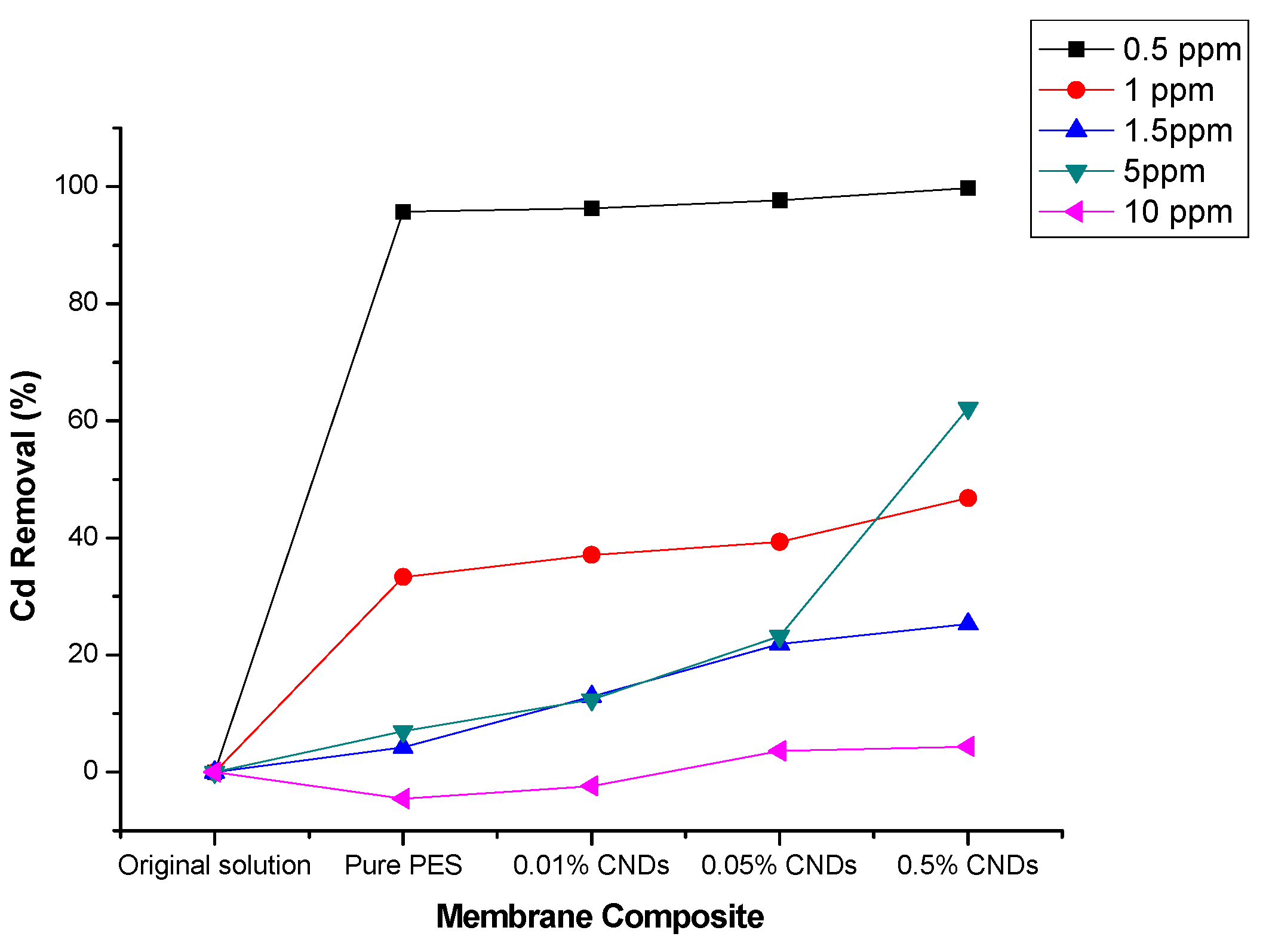
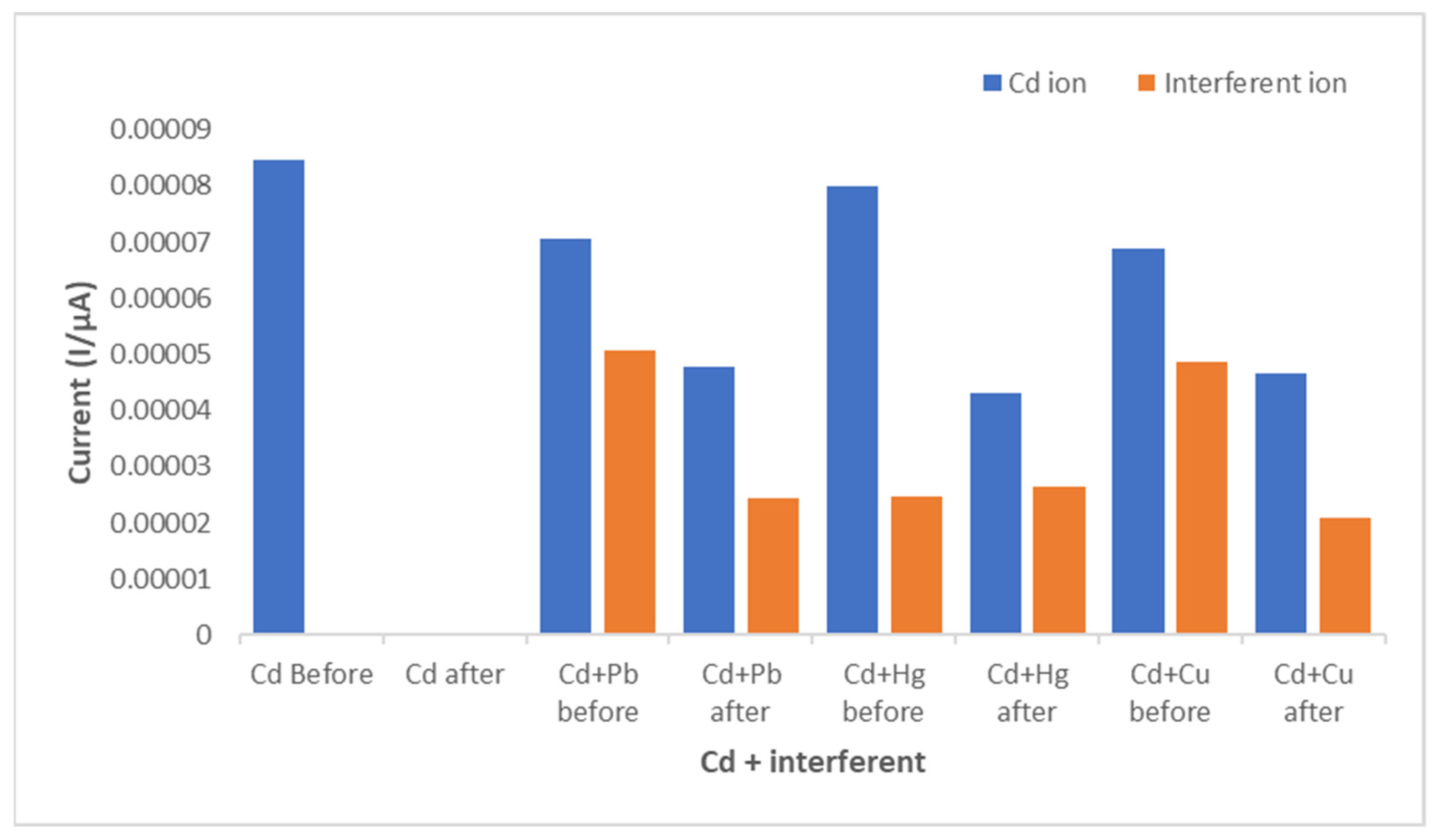

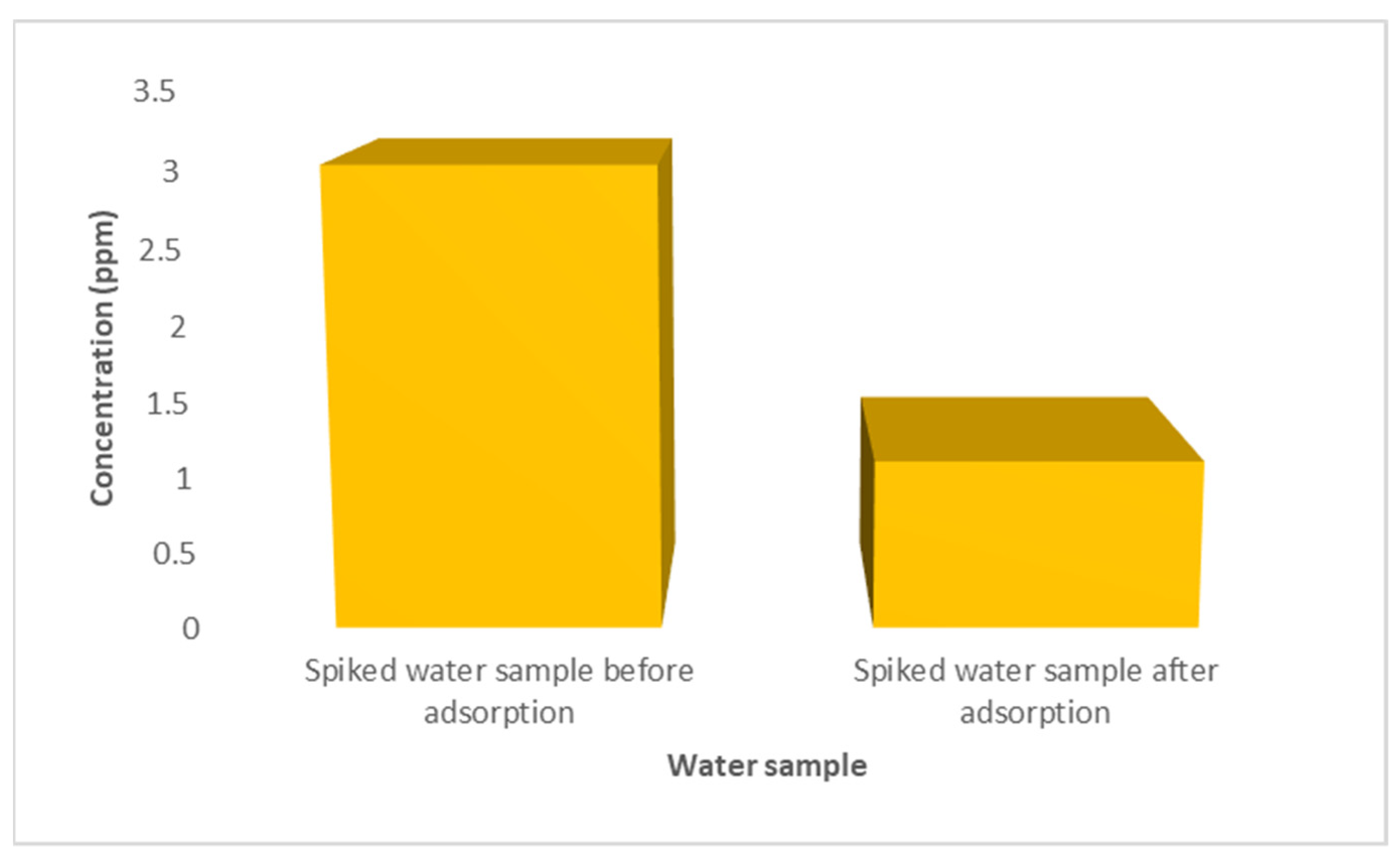
| Membranes | CNDs (g) | NMP (mL) | PES (g) | PVP (g) |
|---|---|---|---|---|
| Pure PES | 0 | 80 | 16 | 2 |
| 0.01% CNDs/PES | 0.01 | 80 | 16 | 2 |
| 0.05% CNDs/PES | 0.05 | 80 | 16 | 2 |
| 0.5% PES/CNDs | 0.5 | 80 | 16 | 2 |
| Sample | Peak Position/cm−1 | ID/IG | |
|---|---|---|---|
| D-Band | G-Band | ||
| Pure CNDs | 1339.02 | 1567.64 | 0.74 |
| 0.01% CNDs/PES | 1337.58 | 1567.64 | 0.79 |
| 0.05% CNDs/PES | 1337.58 | 1567.64 | 0.83 |
| 0.5% CNDs/PES | 1337.58 | 1567.64 | 0.82 |
| Membrane | Surface Roughness (Rq) (nm) |
|---|---|
| Pristine PES | 16.4 |
| 0.01% CNDs/PES | 21.9 |
| 0.05% CNDs/PES | 23.7 |
| 0.5% CNDs/PES | 35.9 |
| Membrane | Detection Technique | % Cd2+ Removal Capacity | Literature |
|---|---|---|---|
| Cerium dioxide and composites | 93.4 mg/g | [9] | |
| Carbon/zirconium oxide composite | AAS | 166.7 mg/g | [10] |
| Sulfonated magnetic nano-particle adsorbents | AAS | 80.9 mg/g | [33] |
| Emulsion liquid membrane | AAS | 0.44 mg/mL and 0.27 mg/g | [35] |
| A boehmite nanoparticle impregnated electrospun fibre membrane | AAS | 0.20–0.21 mg/g | [36] |
| 0.5% CNDs/PES | GCESWASV | 0.70 mg/cm2 | Present work |
Publisher’s Note: MDPI stays neutral with regard to jurisdictional claims in published maps and institutional affiliations. |
© 2021 by the authors. Licensee MDPI, Basel, Switzerland. This article is an open access article distributed under the terms and conditions of the Creative Commons Attribution (CC BY) license (http://creativecommons.org/licenses/by/4.0/).
Share and Cite
Sam, S.; Malinga, S.P.; Mabuba, N. Carbon Nanodots Embedded on a Polyethersulfone Membrane for Cadmium(II) Removal from Water. Membranes 2021, 11, 114. https://doi.org/10.3390/membranes11020114
Sam S, Malinga SP, Mabuba N. Carbon Nanodots Embedded on a Polyethersulfone Membrane for Cadmium(II) Removal from Water. Membranes. 2021; 11(2):114. https://doi.org/10.3390/membranes11020114
Chicago/Turabian StyleSam, Simanye, Soraya Phumzile Malinga, and Nonhlangabezo Mabuba. 2021. "Carbon Nanodots Embedded on a Polyethersulfone Membrane for Cadmium(II) Removal from Water" Membranes 11, no. 2: 114. https://doi.org/10.3390/membranes11020114







